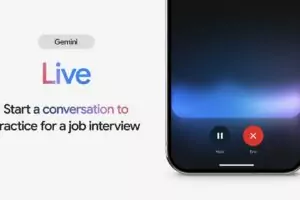Google Photos has unveiled its highly anticipated “Undo device backup” feature, marking a fundamental shift in how users can manage their digital media collections. This innovative feature, first spotted by Android Authority in June 2023, has now officially launched, beginning its rollout to iOS users.
The new functionality addresses a long-standing pain point in cloud storage management by allowing users to selectively remove device-specific backups while preserving local copies of their cherished memories. This development represents a crucial evolution in Google Photos‘ capability to handle the increasingly complex demands of modern digital photo management.
Prior to this update, users faced a significant dilemma when attempting to manage their cloud storage. The previous system created an all-or-nothing scenario where deleting photos from Google Photos would simultaneously remove them from the device storage. This limitation often led to frustrating situations, particularly for users who accidentally uploaded entire photo libraries or those who regularly switched between multiple devices.
The new feature’s implementation is remarkably straightforward, reflecting Google’s commitment to user-friendly design. iOS users can access this functionality through their profile settings in the Google Photos app, navigating through “Google Photos settings” and “Backup” to find the “Undo backup for this device” option. The process includes a clear confirmation step to prevent accidental deletions, requiring users to acknowledge that their device’s photos and videos will be removed from Google Photos.
What makes this feature particularly valuable is its intelligent approach to storage management. When users choose to undo a device backup, the system automatically deactivates future backups from that device, preventing unwanted re-uploads and helping users maintain better control over their cloud storage usage. This automated safeguard demonstrates Google’s thoughtful consideration of user experience and storage management needs.
The timing of this release is particularly relevant given the growing challenges of digital storage management. As smartphone cameras continue to improve and file sizes increase, users are increasingly finding themselves juggling limited cloud storage space across multiple devices. This feature provides a much-needed solution for those who want to maintain local copies of their photos while being more selective about what remains in their cloud storage.
For Android users, while the feature is not immediately available, Google has confirmed its forthcoming release on the platform. This staged rollout approach allows Google to refine the feature based on initial iOS user feedback before expanding its availability to the broader Android ecosystem.
The introduction of this feature also reflects a broader trend in cloud storage services towards providing more granular control over data management. It acknowledges that users’ needs vary significantly when it comes to photo storage and backup strategies. Some might want to maintain comprehensive backups across all devices, while others prefer to keep certain devices’ photos locally stored while backing up others to the cloud.
Looking ahead, this development could signal the beginning of more sophisticated device-specific controls in Google Photos. The ability to manage backups on a per-device basis opens up possibilities for more nuanced storage management features in the future, potentially including device-specific backup preferences or storage quotas.
For users struggling with cloud storage management, this update offers a welcome solution to a common problem. Whether dealing with accidentally backed-up screenshots, duplicate photos from multiple devices, or simply trying to optimize cloud storage usage, the “Undo device backup” feature provides a powerful tool for maintaining control over digital media collections.
As digital photography continues to evolve and storage needs grow more complex, features like this demonstrate how cloud storage services can adapt to meet changing user requirements while maintaining the simplicity and accessibility that made them popular in the first place. The rollout of this feature marks another step forward in Google Photos’ evolution as a comprehensive photo management solution.
















Add Comment